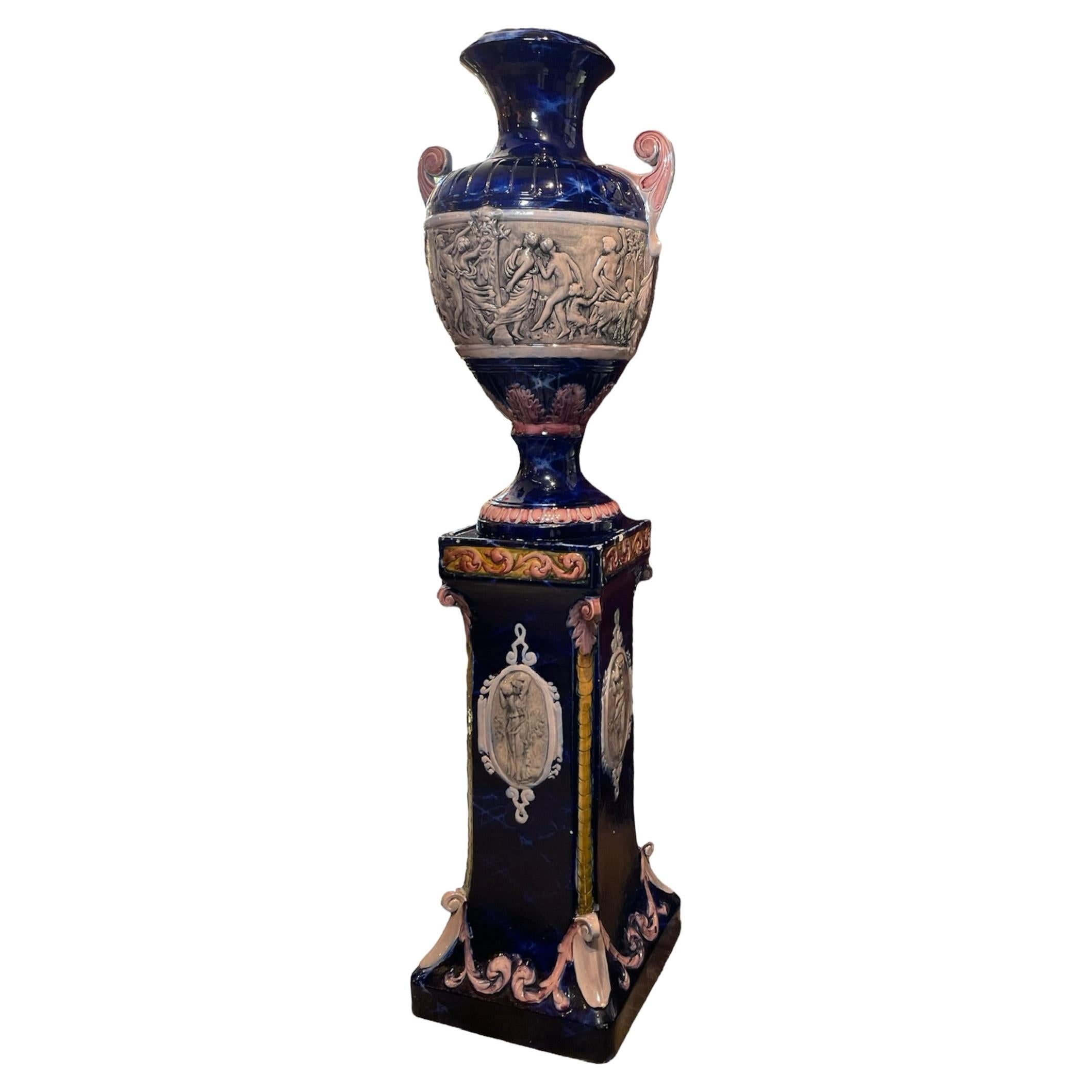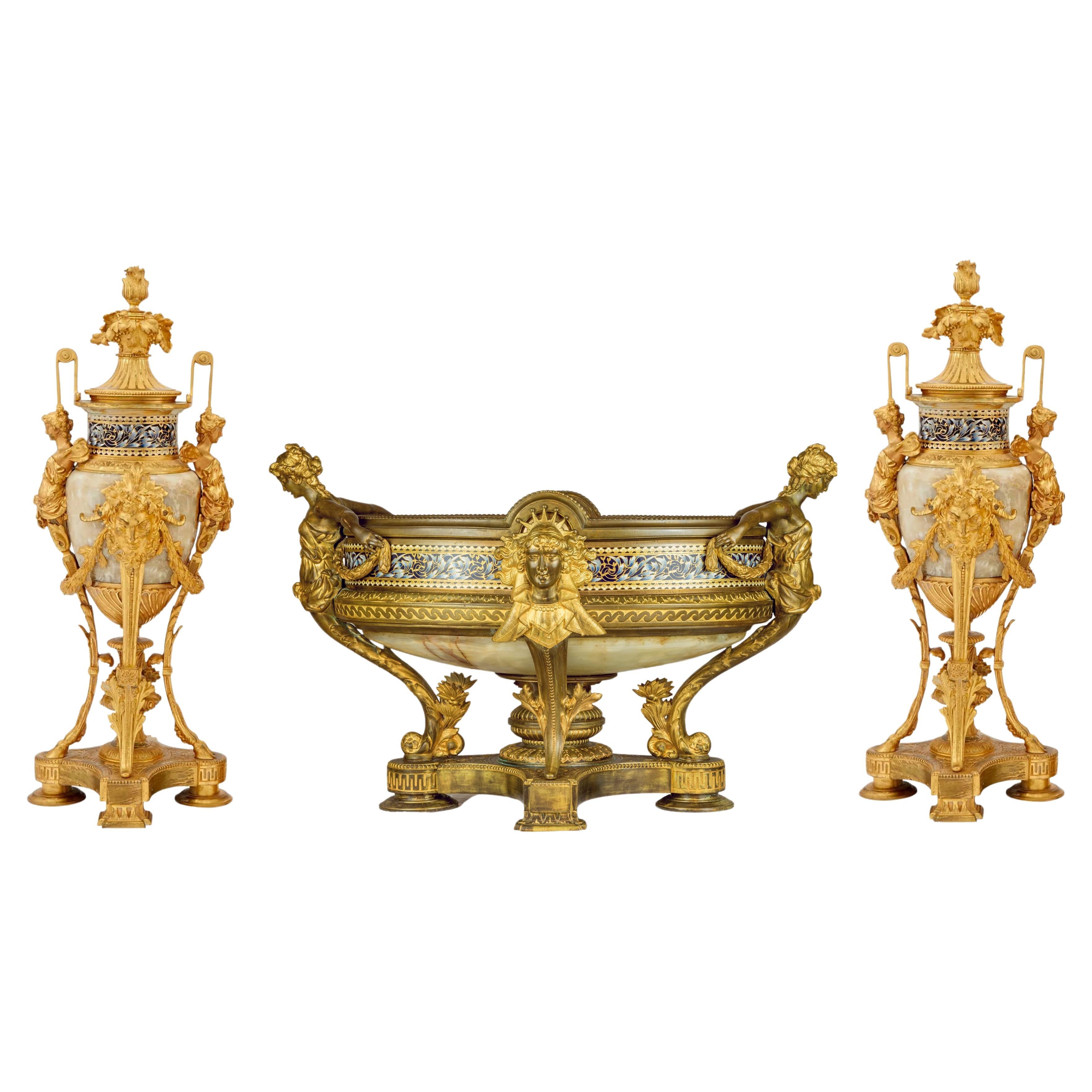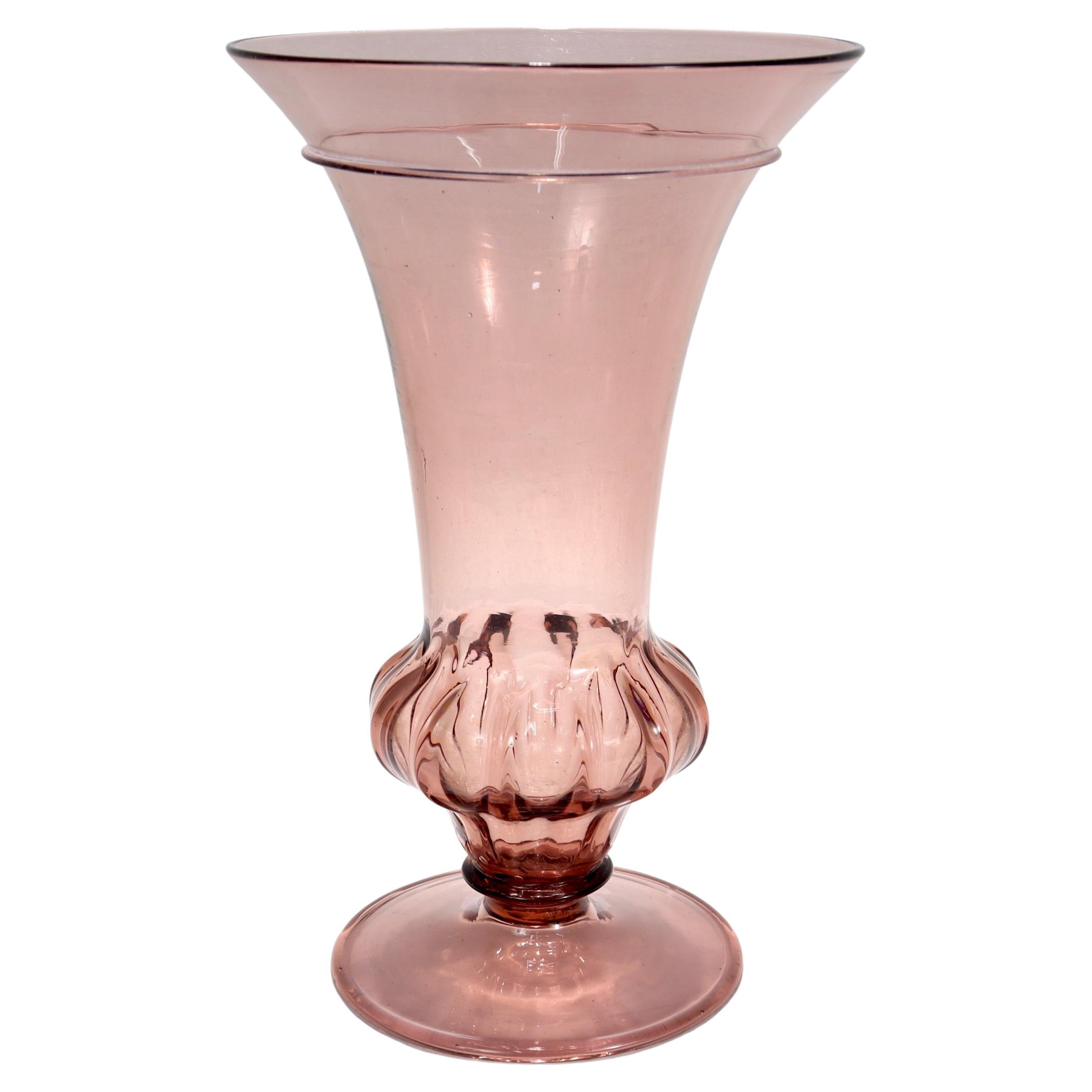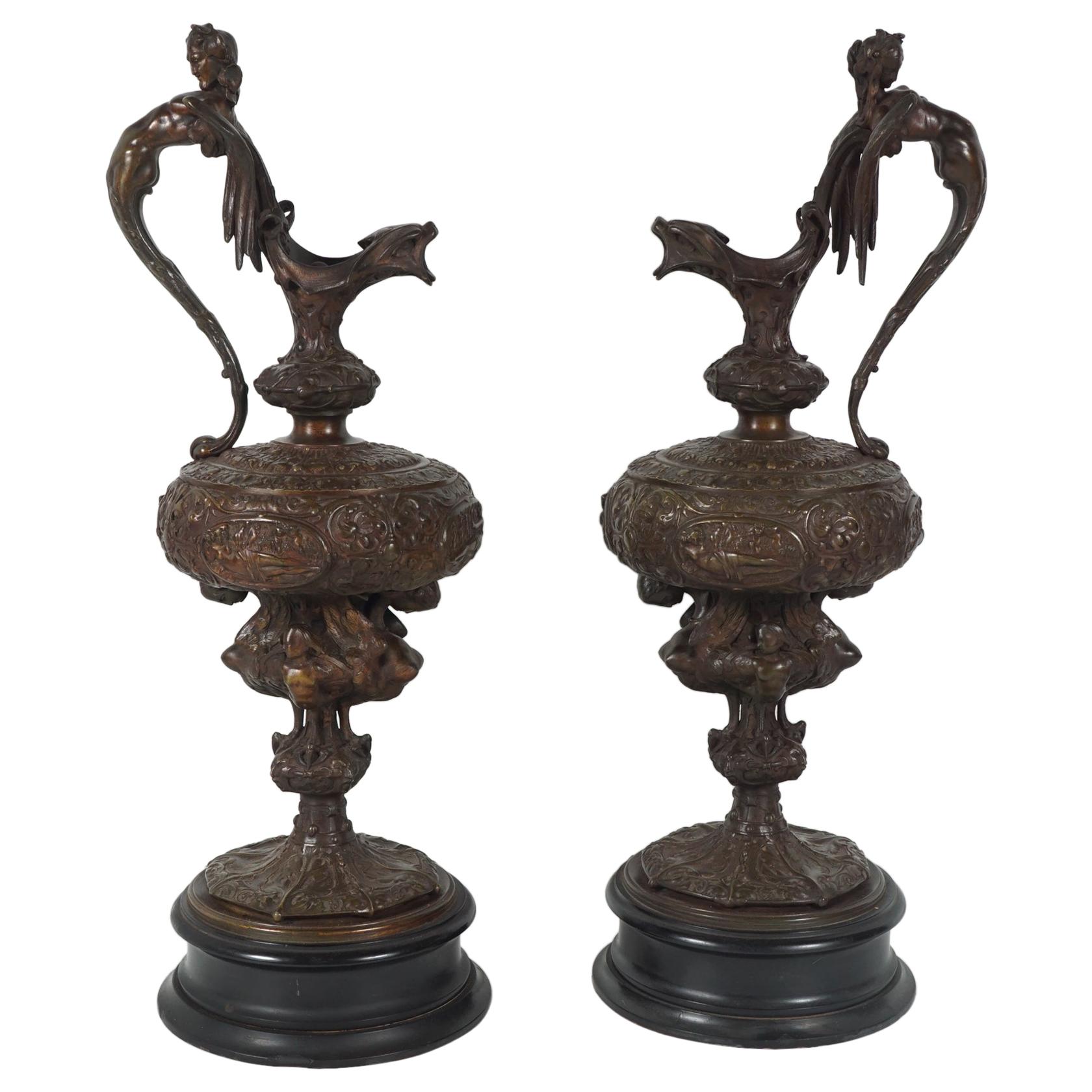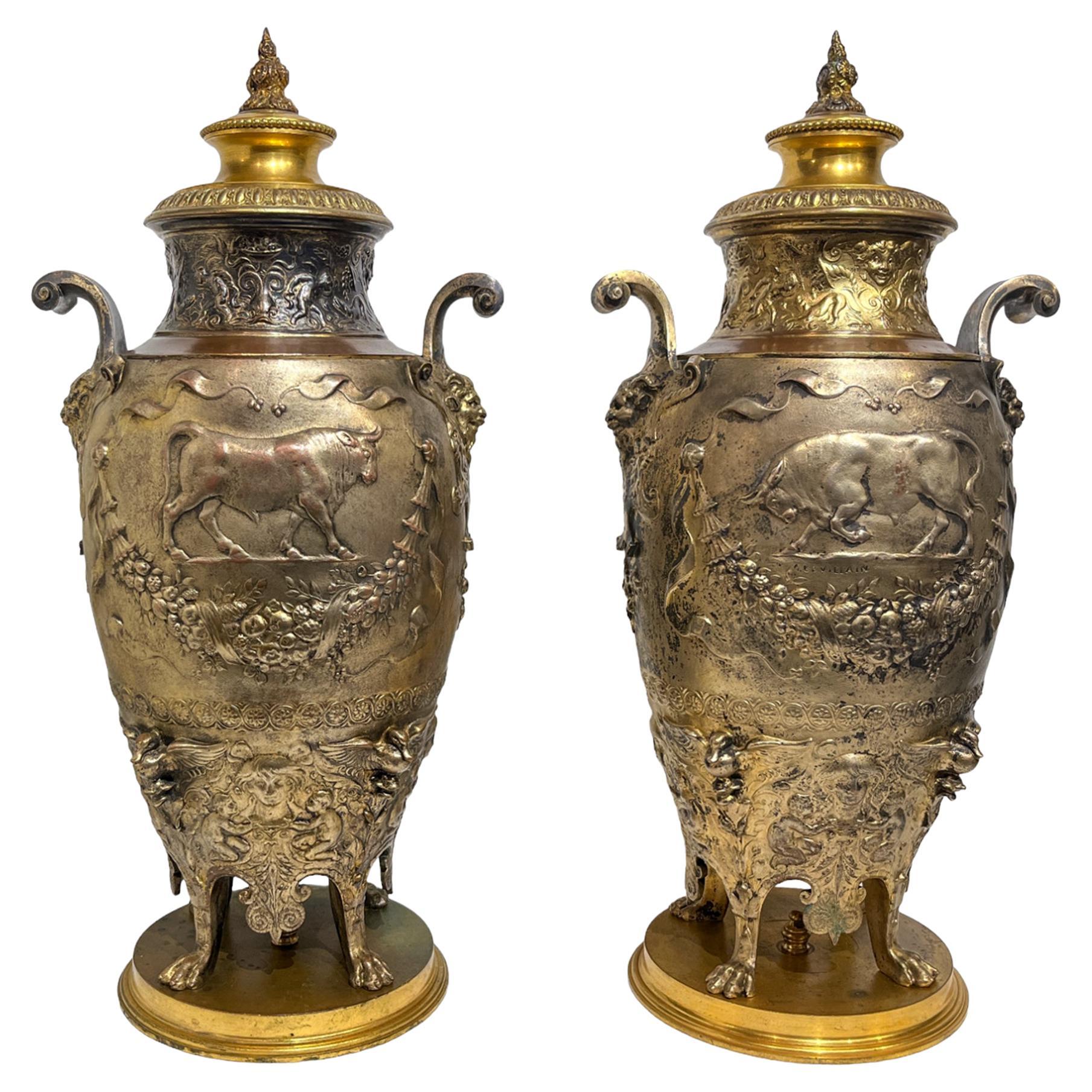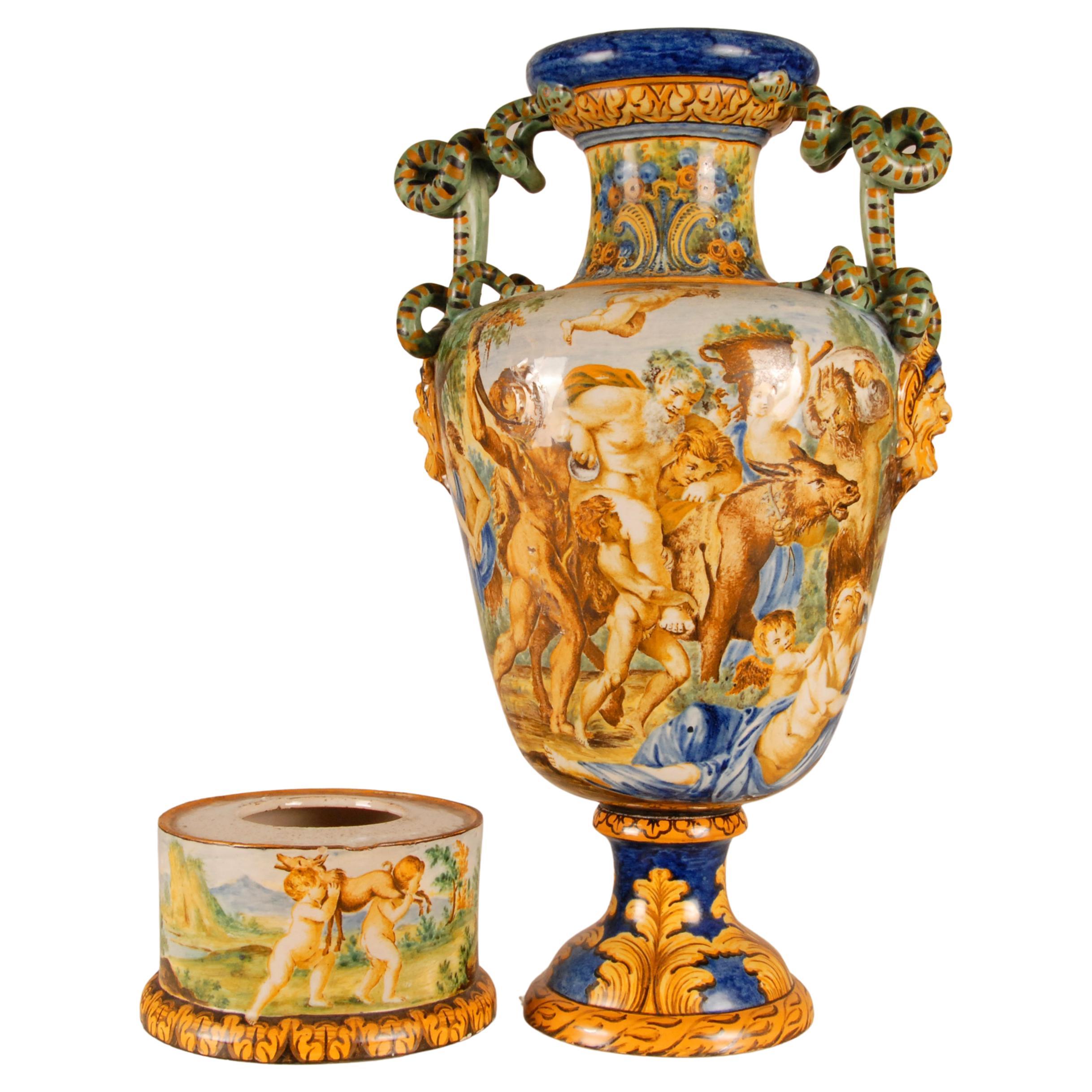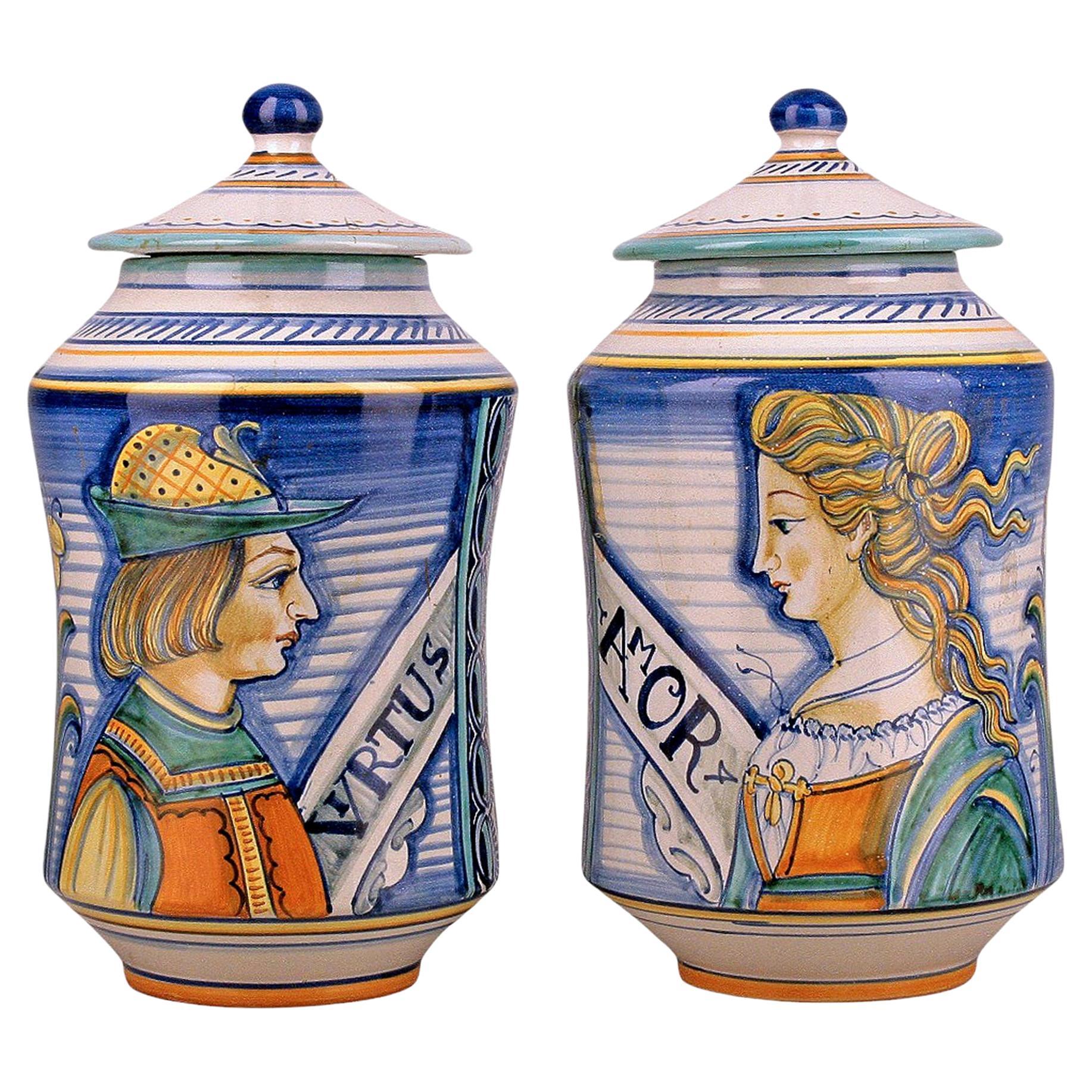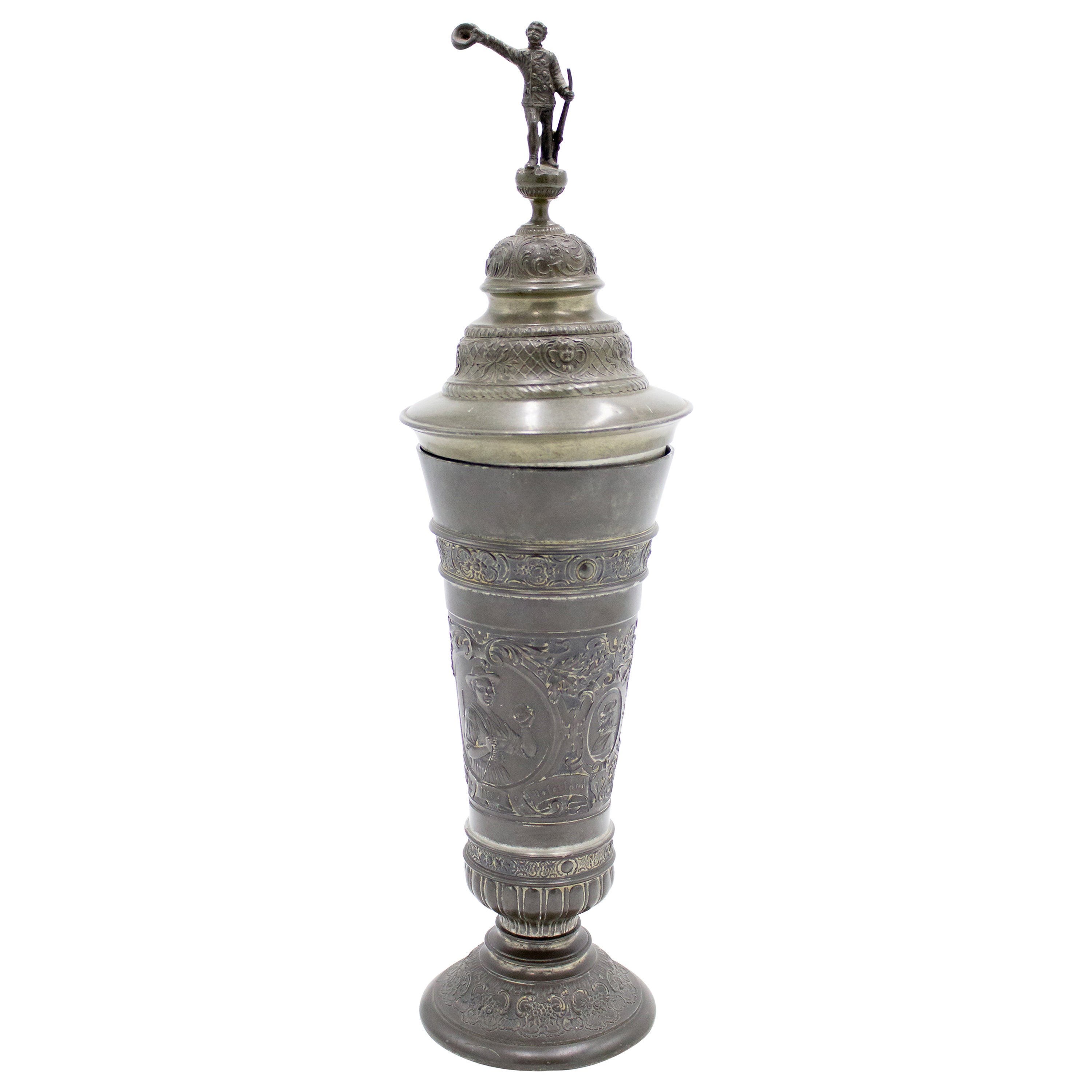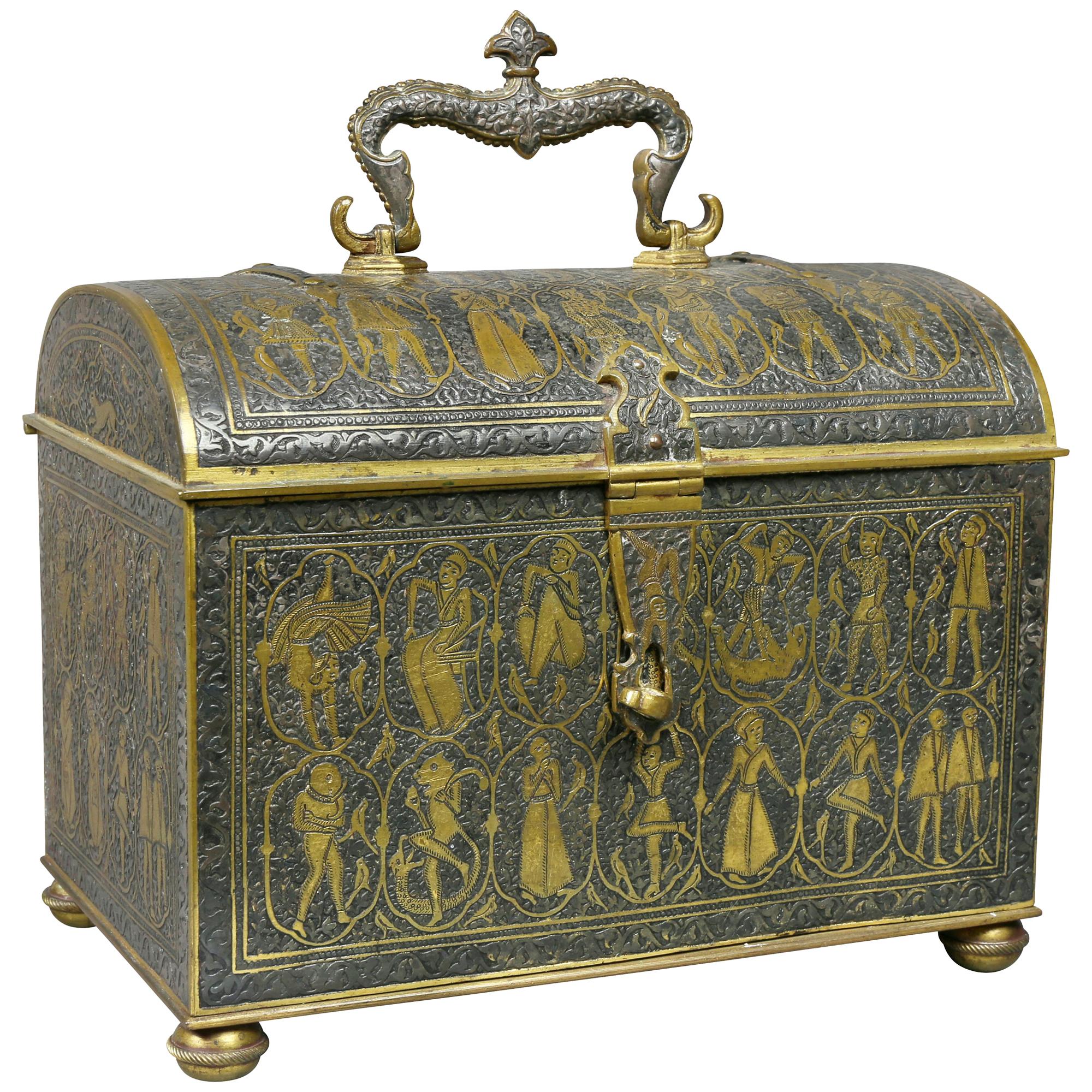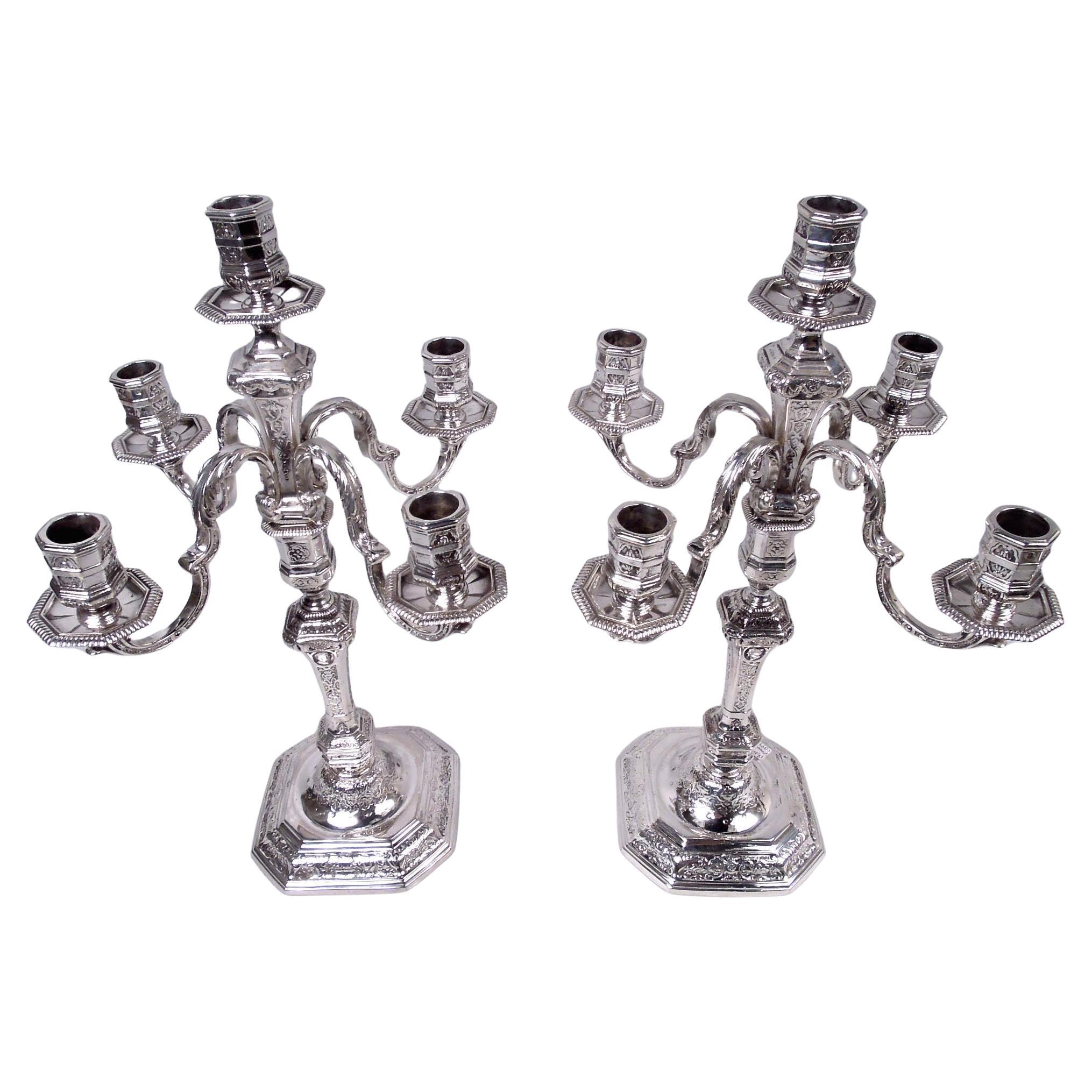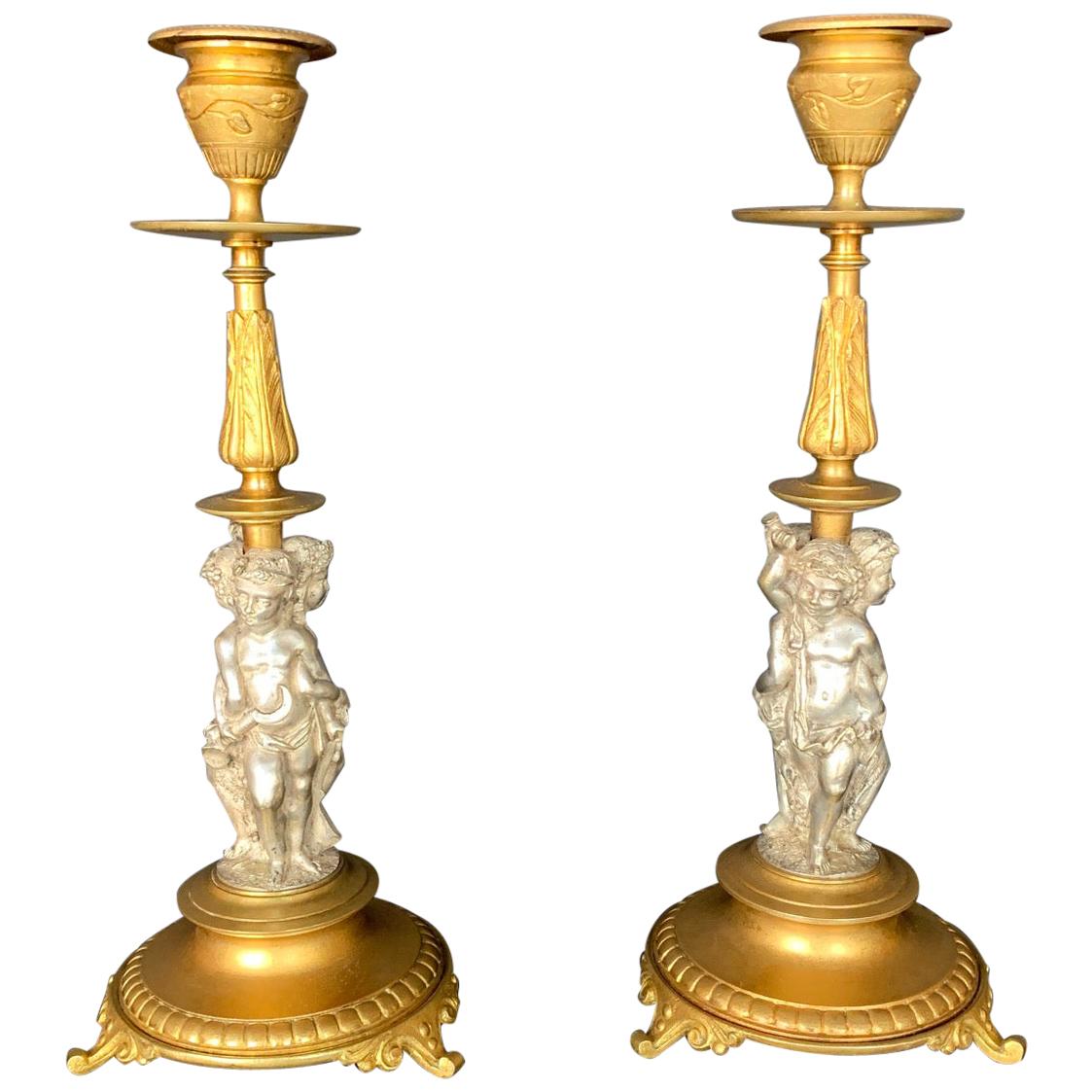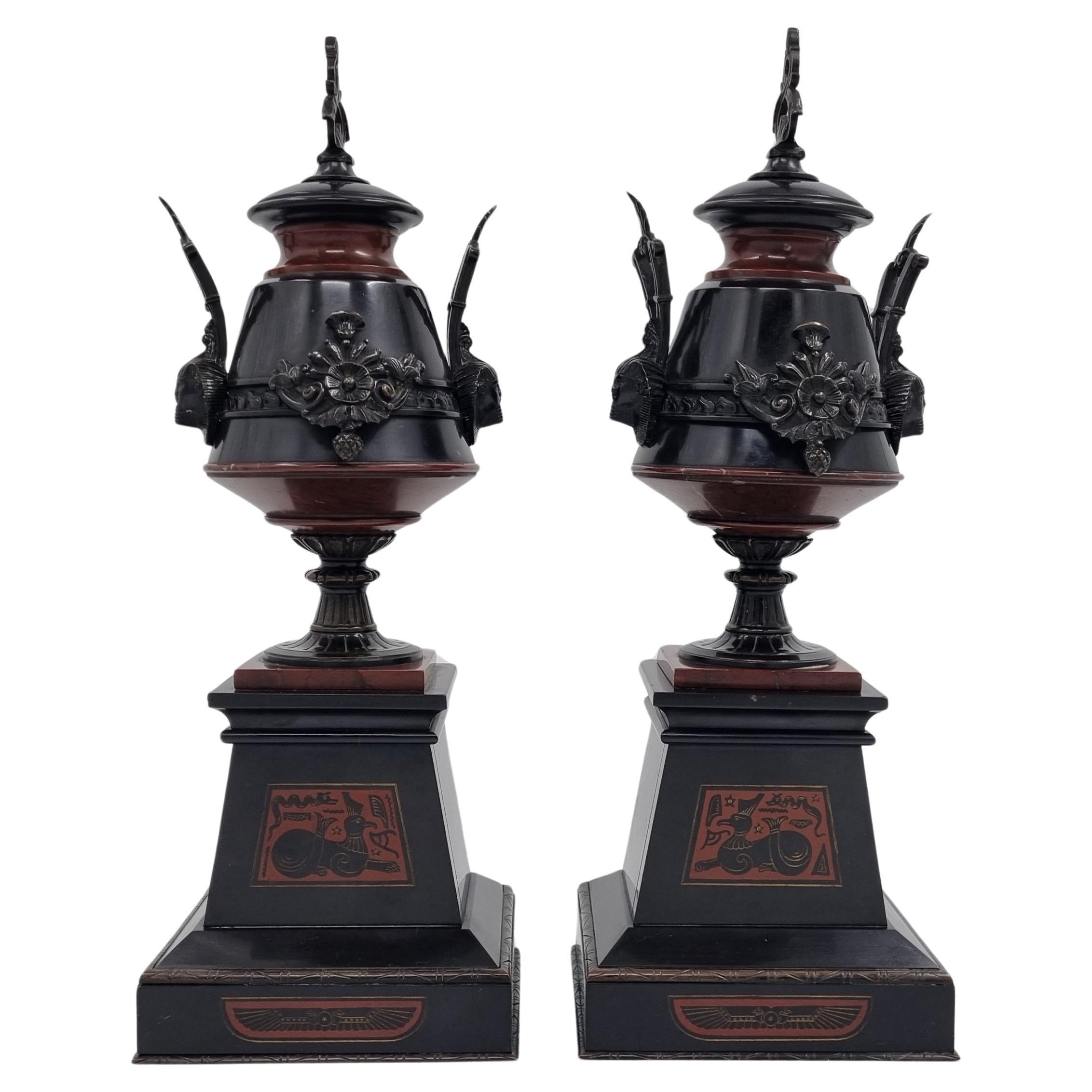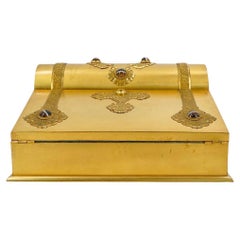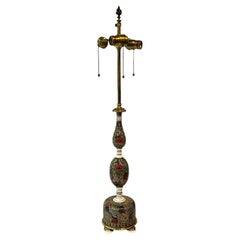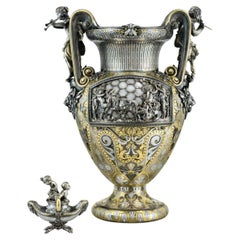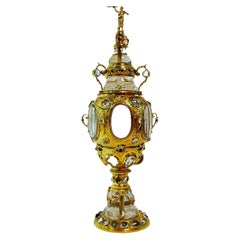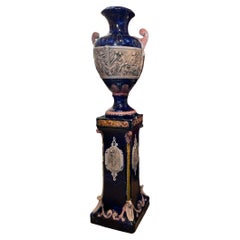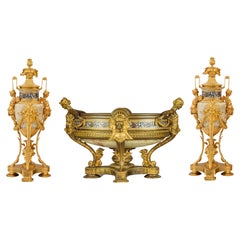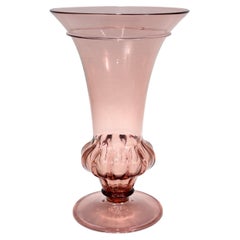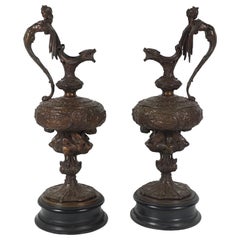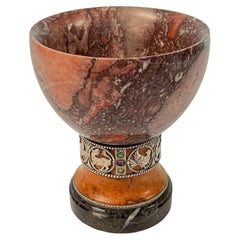
Renaissance Revival Marble and Silver Chalice
View Similar Items
Want more images or videos?
Request additional images or videos from the seller
1 of 14
Renaissance Revival Marble and Silver Chalice
$4,000List Price
About the Item
- Dimensions:Height: 6 in (15.24 cm)Diameter: 5 in (12.7 cm)
- Style:Renaissance Revival (Of the Period)
- Materials and Techniques:
- Period:
- Date of Manufacture:circa 1880s
- Condition:Wear consistent with age and use.
- Seller Location:New York, US
- Reference Number:Seller: 1321stDibs: LU6079227963642
About the Seller
No Reviews Yet
Vetted Professional Seller
Every seller passes strict standards for authenticity and reliability
Established in 1990
1stDibs seller since 2021
Authenticity Guarantee
In the unlikely event there’s an issue with an item’s authenticity, contact us within 1 year for a full refund. DetailsMoney-Back Guarantee
If your item is not as described, is damaged in transit, or does not arrive, contact us within 7 days for a full refund. Details24-Hour Cancellation
You have a 24-hour grace period in which to reconsider your purchase, with no questions asked.Vetted Professional Sellers
Our world-class sellers must adhere to strict standards for service and quality, maintaining the integrity of our listings.Price-Match Guarantee
If you find that a seller listed the same item for a lower price elsewhere, we’ll match it.Trusted Global Delivery
Our best-in-class carrier network provides specialized shipping options worldwide, including custom delivery.More From This Seller
View AllAntique Renaissance Revival Gilt Bronze Travel Desk
Located in New York, US
Our 19th century gilt bronze travel desk from the Renaissance Revival period with exceptional overlaid chased strapwork inset with cabuchon shaped agate stones and hinged handles. I...
Category
Antique Late 19th Century British Renaissance Revival Desk Sets
Materials
Bronze
Renaissance Revival Enameled Bronze and Ivory Table Lamp by E.F. Caldwell
By Edward F. Caldwell & Co.
Located in New York, US
Our unusual and lovely bronze table lamp by Edward F. Caldwell in the Renaissance style dates from circa 1910. It has a segmented cast bronze baluster stem decorated with raised strapwork that has been gilded and enameled to depict figures in Renaissance costumes...
Category
Early 20th Century American Renaissance Revival Table Lamps
Materials
Bronze
Boucheron Parcel Gilt Silver Vase and Oil Lamp circa 1880
By Fréderic Boucheron
Located in New York, US
Our important parcel-gilt and patinated silver and glass-mounted vase and matching oil lamp were designed by Paul Legrand (1840-1910) and crafted by the silversmith, Charles Glachant, for Boucheron of Paris, circa 1878-1880. 21 in tall and 16.5 in wide (53.4 by 41.9 cm). 28.56 lbs, 457 oz, 14,210 g.
Provenance: presented to or purchased by Jean-Baptiste Pezon (1827-1897); acquired by a European private collector, perhaps on the death of Jean-Baptiste Pezon in 1897, by descent; acquired by YM Antiques, 2017.
This double walled vase has an amphora form, with body and foot with silver, gilt and patinated and stylized flowers, anthemions and sprays of cherries against an etched and matted ground pierced to reveal a gilt inner wall. The upper body is detachable via a slip-lock, and mounted on both sides with arched panels formed of hexagonal beveled glass tiles. One glass panel applied with bacchic infants taunting a rearing goat and the other side with infants feeding grapes to a lioness under a looming bust of a satyr. The patinated and gilt upswung loop bifurcated handles are mounted with fully modeled figures of Pan bearing a syrinx and thyrsus and a draped maenad playing two flutes, both above roaring lion heads, the rim inset with a slip-lock detachable gilt bowl etched with masks of various representations of Bacchus spaced by ribbons and trophies and with scrolling fruiting vines. The base of interior with detachable base metal drip pan to accommodate the removable oil lamp designed to illuminate the glass tiles from within. The lamp is raised on four hoof feet, the upturned ends cast underneath with masks and with detachable cover mounted with two infant satyrs and flanked by gilt loop handles.
The bacchic themed design featuring cartouches depicting infants taunting a goat and lion, plus prominent lion masks at the handles, certainly appealed to Boucheron's customer, Jean-Baptiste Pezon (1827-1897), who is believed to have commissioned the piece. Pezon was the celebrated lion tamer and headliner of the Grande Menagerie whose profession brought him great fame and fortune in Paris. Born a shepherd boy in Lozere, he is said to have left his home at the age of seventeen in the company of a wolf he had captured and trained years earlier. He headed to Paris and by the age of twenty-one purchased his first lion who he named Brutus. The animal is said to have inspired the Lion of Belfort, the monumental red standstone sculpture by Frederic Bartholdi erected in Belfort in 1880. Toulouse-Lautrec was among his admirers and friends, visiting Pezon's Great Lozerian Menagerie to sketch animals. A large bronze sculpture of Pezon atop a female lion adorns the Pezon family tomb in the Pere Lachaise Cemetery in Paris, as seen in our image here.
The vase and detachable bowl are marked on the underside with the silversmith's mark of Charles Glachant. The underside and upper rim of the lower body is engraved "Fic Boucheron Paris". The lamp is marked on underside and flange of cover for Glachant.
Boucheron archives indicate the vase was inspired by the amphora vases created by the Greek potter, Nikosthenes, 550-510 BC. The Nikosthenic amphora vases are a form of Attic vase recognized for their angular amphora form with broad flat handles. Potted of bright orange-red clay, they were decorated with plant and animal motifs within distinct friezes, with the most significant defining feature being the black figure painting, often highlighted with white accents. In this vase Legrand re-imagines the striking contrast of the black figures against a warm ground through the use of patina and gilding. His inventive use of piercing and double-wall construction create additional levels of texture and depth throughout the body. The same combination of ornamentation was employed in a ewer designed by Legrand in 1880 in the Islamic taste. (See lot 77 of Christie's sale in New York on October 22, 2009.)
Edmé Bouchardon (1698-1762), royal sculptor to Louis XV, may have provided Legrand with inspiration for the vase's iconography. The panel featuring bacchic infants taunting a rearing goat is very similar to a bas relief representation of Winter designed by Bouchardon for the Fontaine des Quarte-Saisons on rue de Grenelle, Paris. Bouchardon debuted his plaster model for the bas relief in 1741, and the fountain was completed in 1745.
The Boucheron firm, founded by the celebrated jeweler, Frédéric Boucheron...
Category
Antique 1880s French Greek Revival Vases
Materials
Silver
German Rock Crystal and Gilt Brass Coupe with Cover
Located in New York, US
Our extraordinary German cup and cover in the Baroque style, circa 1880s, is crafted from gilt brass and features extensive use of rock crystal, including cabochon and faceted circular jewels. Apparently unsigned. Provenance: Koopman Rare Art, London.
Regilded and in excellent condition. There is a soldered repair to the female's spear.
Founded in London in 1952, Koopman Rare Art is one of the world’s most admired dealers specializing in antique silver, gold and objects de vertu.
Category
Antique Late 19th Century German Baroque Revival Vases
Materials
Quartz, Brass
Antique Patinated Bronze Hydria Water Jar After the Ancient Neopolitan
Located in New York, US
Our antique Grand Tour bronze hydria water jar after the original Greek design, circa 5th century BC, has a verdigris green patina and is finely cast with a winged laughing mask and ...
Category
Antique Late 19th Century Italian Neoclassical Revival Jars
Materials
Bronze
Monumental Antique Bohemian Gilt Glass Vase
By Harrach Glassworks
Located in New York, US
Our very large (33 1/2 inch tall) and elegant gilt-decorated glass vase on stand dates from the third quarter of the 19th century. Attributed by ...
Category
Antique Mid-19th Century Czech Neoclassical Vases
Materials
Glass
You May Also Like
Renaissance Revival Set Of Amphora And Pedestal
Located in Guaynabo, PR
This is a Renaissance revival style large Majolica amphora vase with rectangular pedestal. Their background are hand painted cobalt blue and decorated with an off-white relief of Gre...
Category
20th Century Unknown Renaissance Revival Urns
Materials
Majolica
$1,760 Sale Price / set
20% Off
A Renaissance Revival Onyx and Champlevé Planter with Cloisonné Enamel Urns
Located in New York, NY
A very fine quality renaissance revival gilt-bronze and champlevé planter, with oval bowl and caryatid handles, a regal mask head to either side and ...
Category
Antique Mid-19th Century French Renaissance Revival Planters, Cachepots ...
Materials
Onyx, Bronze, Enamel, Gold Leaf
Antique Renaissance Revival Footed Purple Venetian Glass Vase
By Salviati, Barovier, Venini
Located in Philadelphia, PA
A fine purple Venetian or Murano glass vase.
With a trumpet form top above a suppressed, ribbed knob at its base, and supported by a disc foot.
Rough pontil mark to the unders...
Category
Early 20th Century Italian Renaissance Revival Vases
Materials
Art Glass
Pair of English Victorian Renaissance Revival Cast Bronze Ewers
Located in Hudson, NY
These large and very detailed Renaissance Revival cast bronze decorative ewers come from England and were made circa 1870. The body of the vases are divided into oval plaques represe...
Category
Antique Late 19th Century English Renaissance Revival Garniture
Materials
Marble, Bronze
Pair of Renaissance Revival Gilt Bronze Covered Urns by Levillain
By Ferdinand Levillain
Located in New York, NY
This pair of urns are truly exquisite. Two scrolled handles terminate in centaur mascarons which lead the eye to the strong bulls on either side of each urn belly; signed 'Levillain'...
Category
Antique Late 19th Century French Renaissance Revival Urns
Materials
Bronze
Majolica Renaissance Vase Serpentine Handles Bacchus Italy 19th Century Revival
By Cantagalli, Deruta
Located in Wommelgem, VAN
Tall Italian majolica serpentine handles vase with a mythological scene
Depicting The Triumph of Bacchus and Ariadne - Annibale Carracci - 1597...
Category
Antique 19th Century Italian Renaissance Revival Vases
Materials
Majolica
Recently Viewed
View AllMore Ways To Browse
Carved Semi Precious Stone Birds
Matte Black Vase
Antique Bird Perch
Small Bronze Vase
Art Deco Metal Vase
Art Nouveau Emile Galle
Hand Thrown Vase
Large Brown Pottery Vase
Antique Cut Glass Vase
Red Pair Vases
Antique Vase Made In England
Orange Murano Art Glass
Vase Brazil
Venini Signed
Crystal Colour Vases
Circles Vase
Hand Blown Red Glass Vase
Unusual Glass Vase
